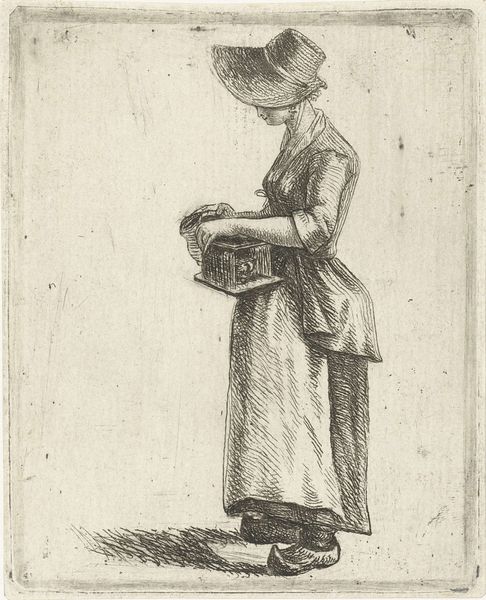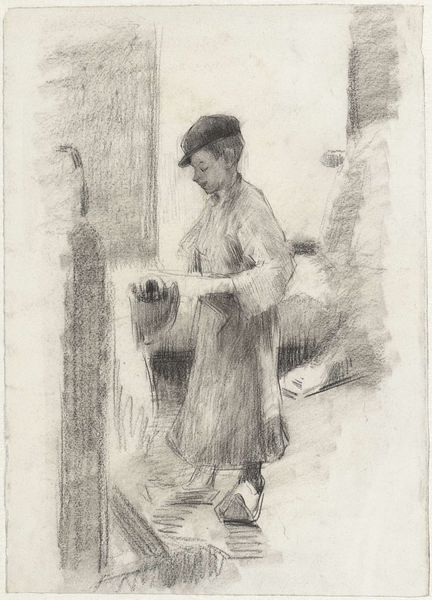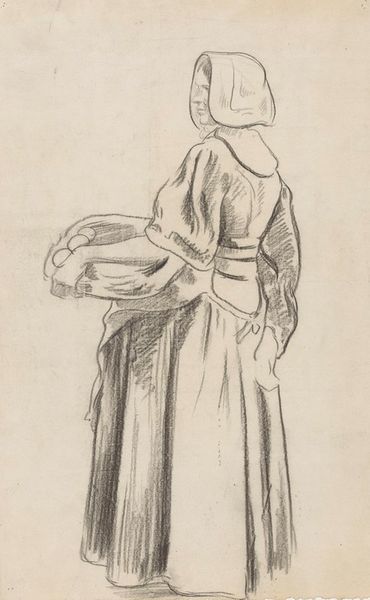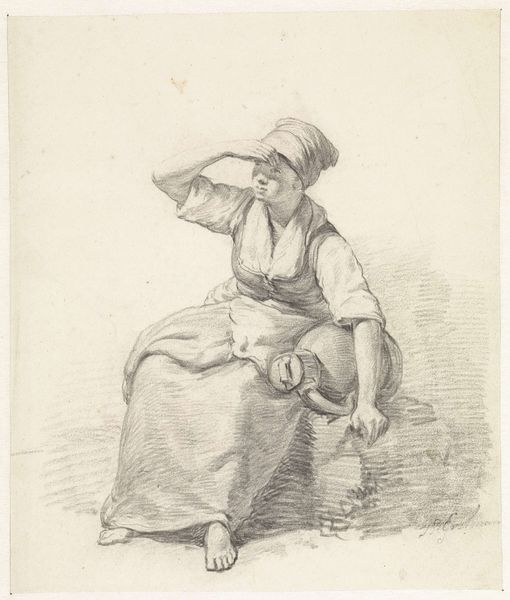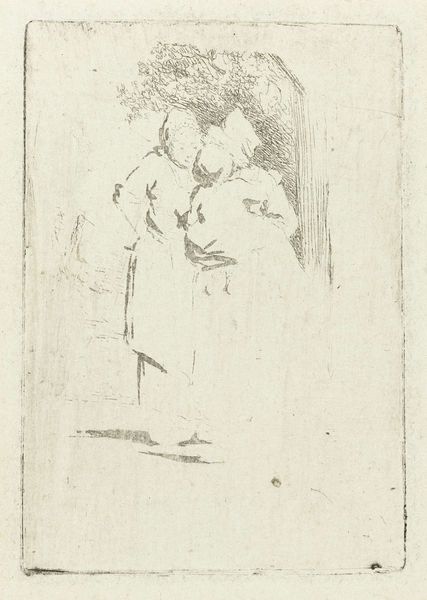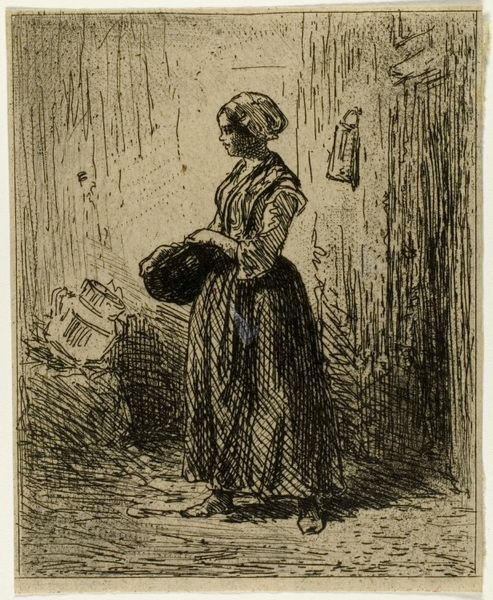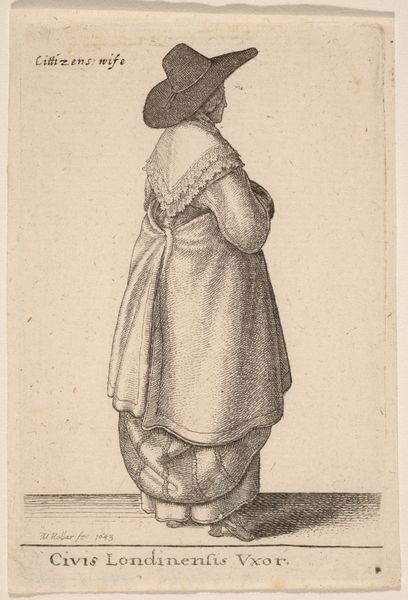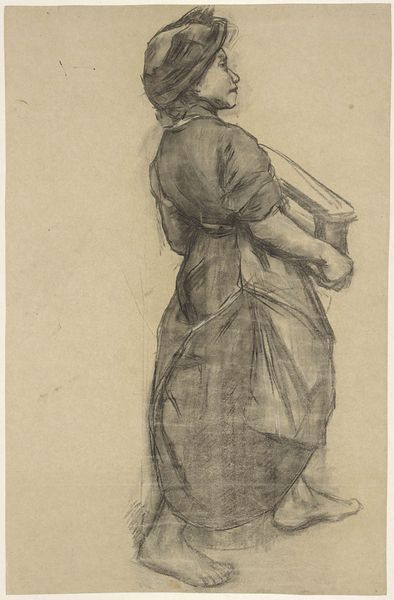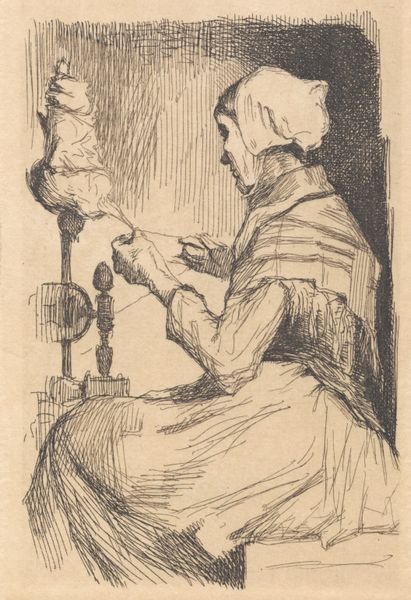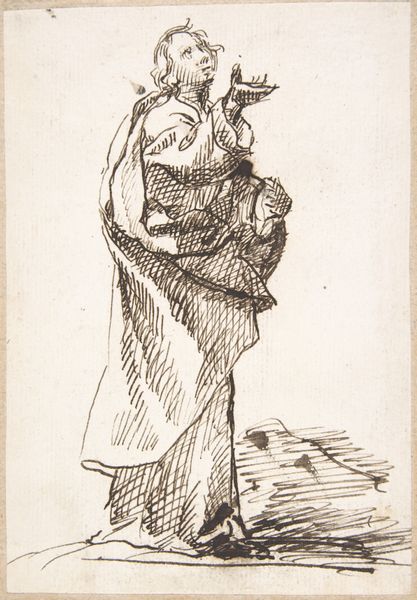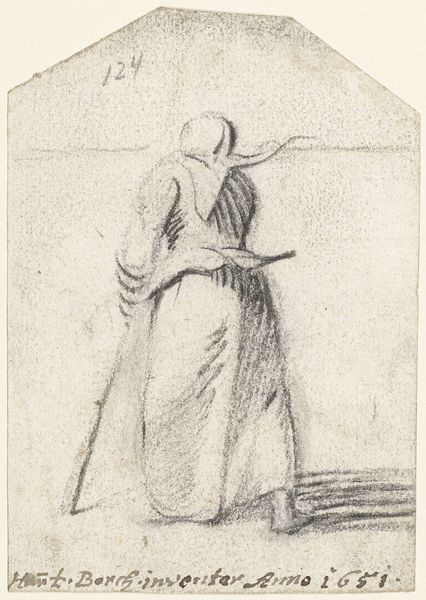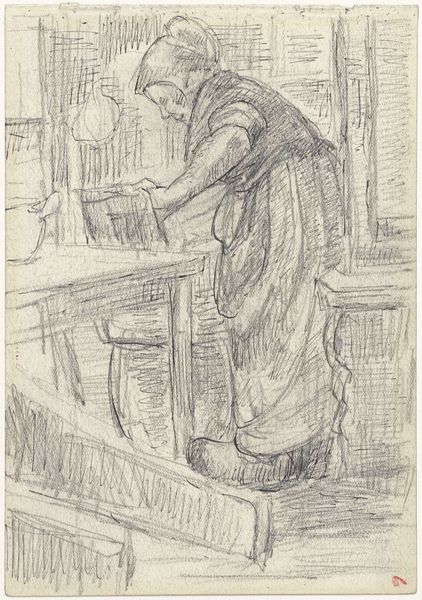
print, etching
#
portrait
# print
#
etching
#
genre-painting
#
realism
Copyright: National Gallery of Art: CC0 1.0
Curator: James McBey's etching, "A Volendam Girl," created in 1910, presents us with an intimate portrait of a young woman immersed in what seems a daily routine. Editor: The immediate impact is its quietness. It has this somber moodiness emphasized by the monochromatic palette and dense hatching used for her dress and apron. What exactly is she doing? Curator: Observe how McBey uses line to delineate form, especially the textures and draping of her traditional garments. Consider the composition, particularly the figure's placement in relation to the background objects – barrels and wooden structures. Semiotically, her garb signifies cultural heritage, regional identity. Editor: Let's think about that garment in terms of labor. Consider the amount of material it uses. Who would have been producing the cloth for her dress? Who constructed the dress itself and maintained it? The very wearing of these clothes, however everyday, becomes an act embedded in a complex system of production. Even those barrels hint at local industry, maybe brewing or fishing? Curator: Precisely! The layering of textures and precise detailing are crucial to understanding its aesthetic. Furthermore, consider the tonal range that generates both a palpable sense of volume to the subject's clothes as well as imbuing this humble moment with a feeling of dignity and grace. Editor: I agree; this quiet moment hints at both the young girl’s responsibilities and the unseen labor within a household, suggesting gender roles embedded within this rural setting. The etcher’s own hand becomes part of that narrative, and it is a deliberate choice to represent this specific view in a certain light and a certain aesthetic. Curator: The piece evokes a particular atmosphere. There’s a melancholic air, yes, but there is also stillness and respect afforded to the individual subject. I like how the density of hatching increases as you get toward the hem of her skirt. Editor: Indeed. Its understated realism opens our eyes to the intricacies of lived experience, offering insight into production, local industry, class and labor at that moment. Curator: It does invite reflection. By delving into these various textual and compositional elements, we gain a broader grasp of the artistic language McBey uses, the impact he hoped to accomplish and why the scene resonates to this day.
Comments
No comments
Be the first to comment and join the conversation on the ultimate creative platform.
